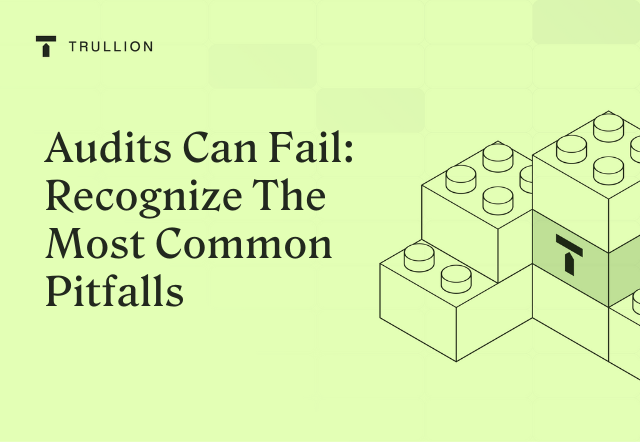Audits stand as a cornerstone, providing assurance to shareholders, management, and stakeholders. Yet, at times, they fall short of their objectives: identifying fraud, ensuring accurate financial representations, or confirming compliance with regulations.
The impact of a failed audit is far-reaching: from the burden of issuing restatements to the loss of investor confidence, the firing of key personnel, and the spectacular implosions of companies as the world has seen from Enron to FTX.
However, these challenges aren’t insurmountable, and with strategic approaches, auditors consistently demonstrate their ability to rise above these hurdles. Here are some of the most common pitfalls encountered in audits:
Management Transparency and Integrity Risks
Despite an audit team’s best efforts, it is possible for management to hide items from auditors, create fictitious transactions, or otherwise manipulate figures, balances, or projections of future performance.
While a full forensic audit will usually pick up on such items when it comes to a regular financial audit, this may not be the case: not every figure is checked in-depth, sampling is used, and internal controls are often relied upon.
In general, these manipulations get found out eventually – whether in the next financial reporting period or sometimes even later – but certainly for a limited time, management is in a position to mislead auditors.
A standout case in point is Wirecard. Auditors were misled to the tune of over $4 billion based on a “sophisticated global fraud” which resulted in the bankruptcy of a company once worth $28 billion.
Disorganized Client Systems
Most auditors will have experienced those nightmare clients where information is just not readily available, and it seems impossible to emerge from the mess.
Often these audits drag on for years, getting “stuck” because the original figures cannot be confirmed, preventing the audit team from beginning the next financial year.
On many occasions, this is accompanied by a revolving door of financial employees at the client, along with poor record keeping and multiple ways of accounting for different transactions.
Needless to say, this results in a failed audit – and in many cases, no finalized audit at all.
Human Error and Behavioral Biases
Human error and behavioral biases can significantly impact the effectiveness of financial audits.
Within audit procedures, the manual nature of certain tasks introduces potential human errors that can compromise the integrity of assessments. From data entry to calculations, these manual processes are susceptible to inaccuracies that might seem trivial but can significantly impact the audit’s outcome.
In parallel to human error, auditors navigate cognitive biases that subtly influence their judgment. One such critical bias is confirmation bias, leading auditors to seek information affirming pre-existing beliefs, potentially overshadowing contradictory evidence. Similarly, anchoring biases might lead to an undue reliance on initial information, even if flawed, shaping subsequent decisions. Addressing these biases through heightened awareness among audit teams ensures a more balanced and objective evaluation of financial data.
Balancing the mitigation of human errors rooted in manual processes with a conscious effort to counter cognitive biases stands as a foundational approach for enhancing audit methodologies. By integrating strategies that address manual errors and promote cognitive awareness, auditors fortify their capacity to conduct more accurate, reliable, and unbiased financial assessments.
Complex Transactions and Accounting Standards
Sophisticated transactions and new or complex accounting standards present significant challenges to the accurate auditing of financial statements. Financial transactions have grown increasingly elaborate, involving various global parties, financial instruments, deep technology, and complex structures.
Auditors face the task of understanding and investigating these transactions to assess their correct accounting treatment. The complexity often arises from intricate derivatives, complex debt instruments, lease calculations, and non-standard revenue recognition practices, which may require specialized knowledge and expertise to evaluate accurately.
Failure to grasp the intricacies of these transactions can result in material misstatements in the financial statements, and a failed audit.
What’s more, rapid changes in accounting regulations can pose challenges for both auditors and their clients. Accounting standards and regulations, such as the International Financial Reporting Standards (IFRS) and the Generally Accepted Accounting Principles (GAAP), are subject to frequent updates and revisions.
These changes can lead to compliance issues, as auditors and clients must adapt to new requirements and interpret their implications correctly. Staying current with the latest accounting standards and their practical implications requires ongoing professional development for auditors, while failure to stay abreast of these changes can lead to misunderstandings, non-compliance, or misapplication of accounting standards, which can lead to failed audits.
Addressing Audit Failures and Common Pitfalls
In navigating the intricacies of financial transactions, client records, and evolving standards, auditors encounter multifaceted challenges demanding adeptness and adaptability.
To overcome these challenges, the audit industry is poised to leverage key strategies:
- Specialized training and continuous professional development
- Enhanced communication and collaboration between auditors and clients
- Adoption of advanced audit technology to address complexity, identify errors, and promote healthy communication
The evolution of audit practices extends beyond a mere industry challenge; it’s a collective responsibility across diverse sectors. By prioritizing advancements in technology, fostering ongoing professional development, and nurturing effective communication channels, auditors pave the way for a more resilient and dependable global financial system, reinstating stakeholders’ confidence and trust.










